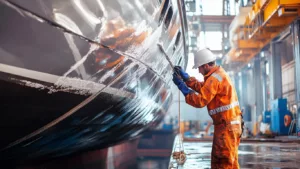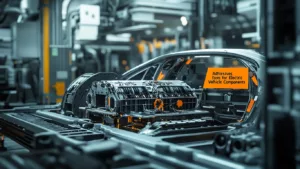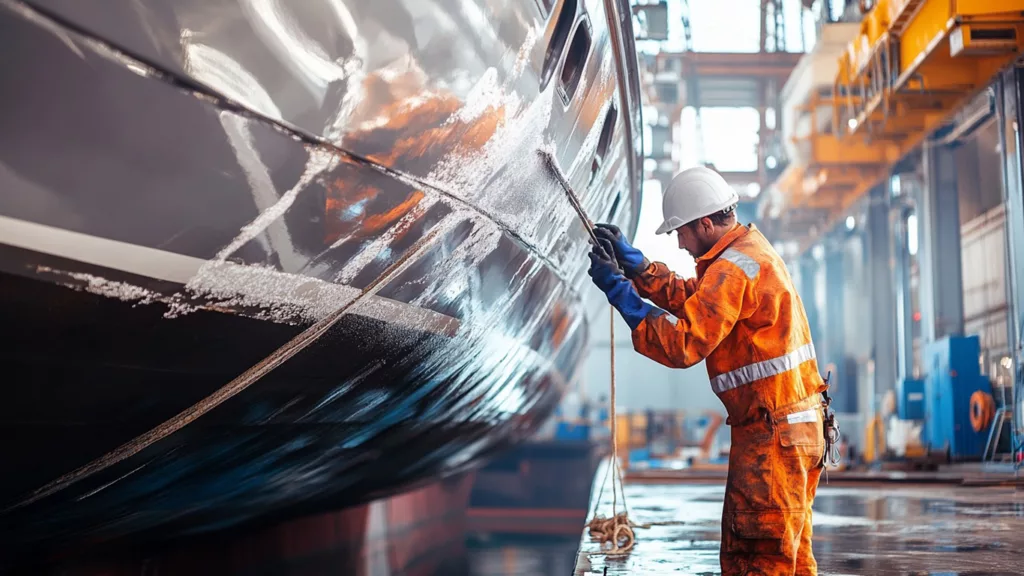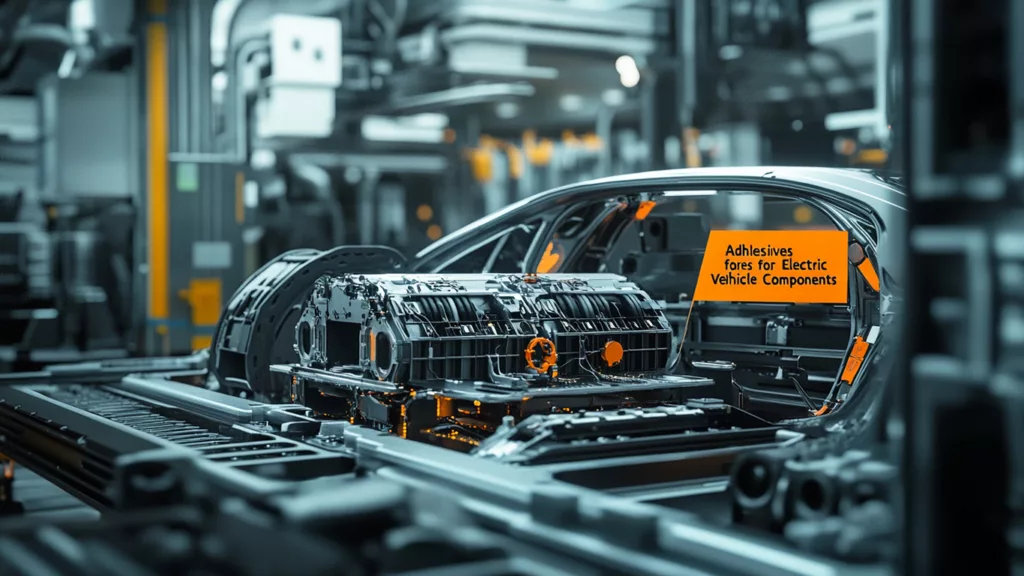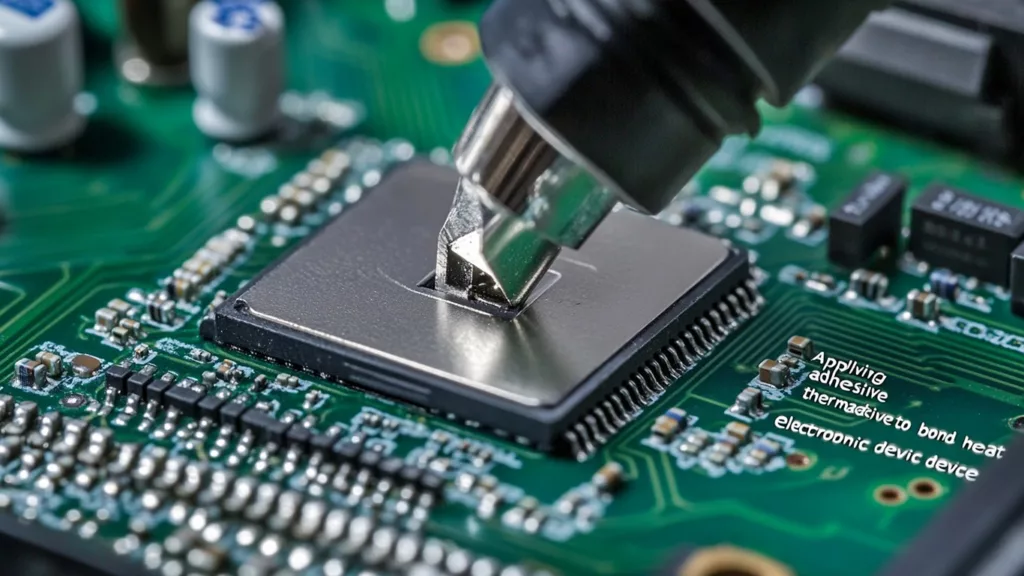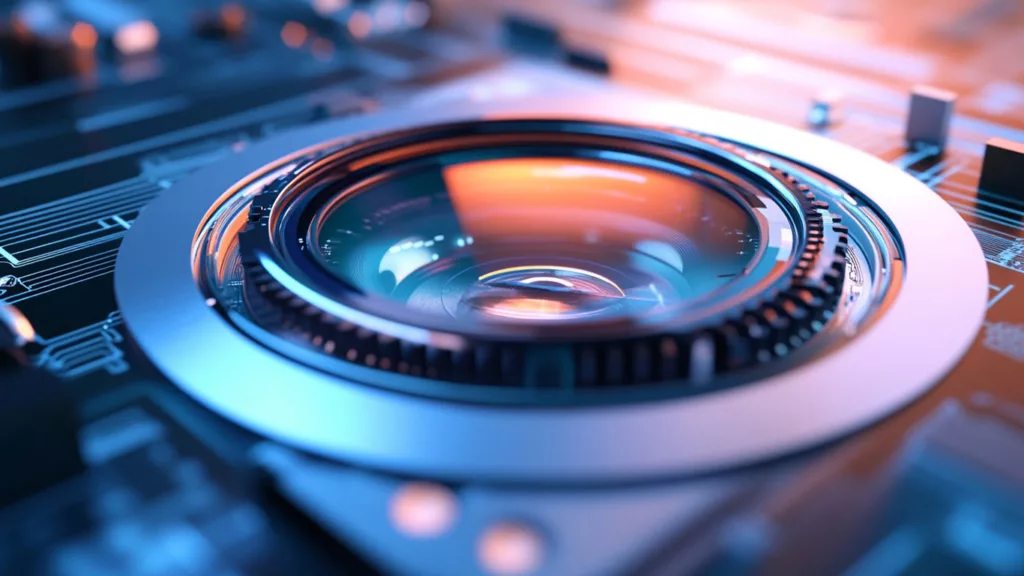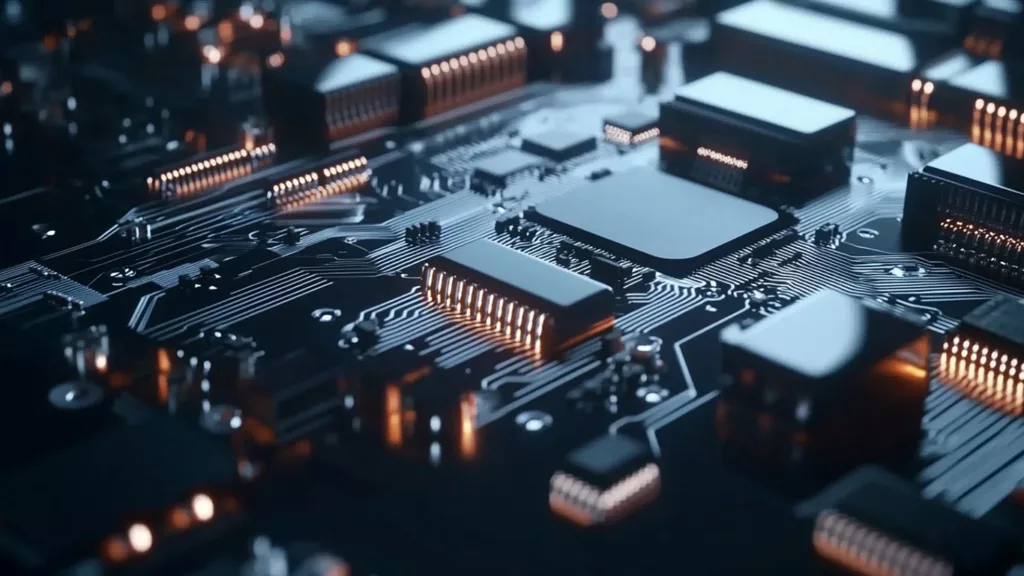At ZDS™, we know how important it is to keep electronic parts safe from shock and vibration. Polyurethane potting is a great way to protect these parts and make them last longer. We use strong materials to make sure your electronics are safe from damage.
This method of using potting compounds is very important in the electronics world. Our special polyurethane formulas help keep devices working well, even when things get tough. We’ll explore more about how polyurethane potting helps keep electronics safe.
Key Takeaways
- Polyurethane potting provides robust protection against shock and vibration.
- Durable potting compounds enhance the longevity of electronic components.
- Innovative formulations from ZDS™ offer adaptable solutions for various applications.
- Using the right potting materials mitigates the impact of environmental factors.
- Polyurethane formulations are critical for creating reliable electronics.
Understanding Polyurethane Potting
Polyurethane potting is key in protecting electronic parts. It involves covering them in a strong material. This keeps them safe from the environment and physical damage. Polyurethane is a top pick for protecting electronics.
What is Polyurethane Potting?
Polyurethane potting uses a special polymer to cover electronic devices. It makes a strong shield against moisture, dust, and other dangers. This method helps make products last longer and work better. It’s very important for devices that face harsh conditions.
The Role of Polyurethane in Electronics
Polyurethane is vital in protecting electronics. It’s flexible, can handle high temperatures, and is clear. These traits help devices work well in many situations. It’s used in everything from gadgets to industrial equipment. For top-notch polyurethane resin, check out ZDS™.
Benefits of Polyurethane Potting
Polyurethane potting makes electronic components work better and last longer. It does this by being tough and lasting, and by fighting off environmental harm.
Durability and Longevity
Polyurethane is very durable and lasts a long time. It wraps around sensitive electronics, protecting them from shock and vibration. This is key in harsh places like cars and planes.
When you need things to keep working without stopping, polyurethane helps. It keeps components safe and working right, even after a long time.
Enhanced Resistance to Environmental Factors
Polyurethane also fights off environmental enemies. It guards against UV light, stays stable in heat, and keeps moisture out. This makes components last longer.
Here’s a table showing how polyurethane helps in different situations:
| Feature | Benefit |
|---|---|
| UV Resistance | Prevents degradation due to sunlight exposure |
| Thermal Stability | Maintains performance in extreme temperature variations |
| Moisture Resistance | Protects against corrosion and electrical failures |
Polyurethane is a top pick for many makers. For more info on strong materials, check out ZDS™ metal glue solutions. They’re fast to dry and strong, good for many uses.
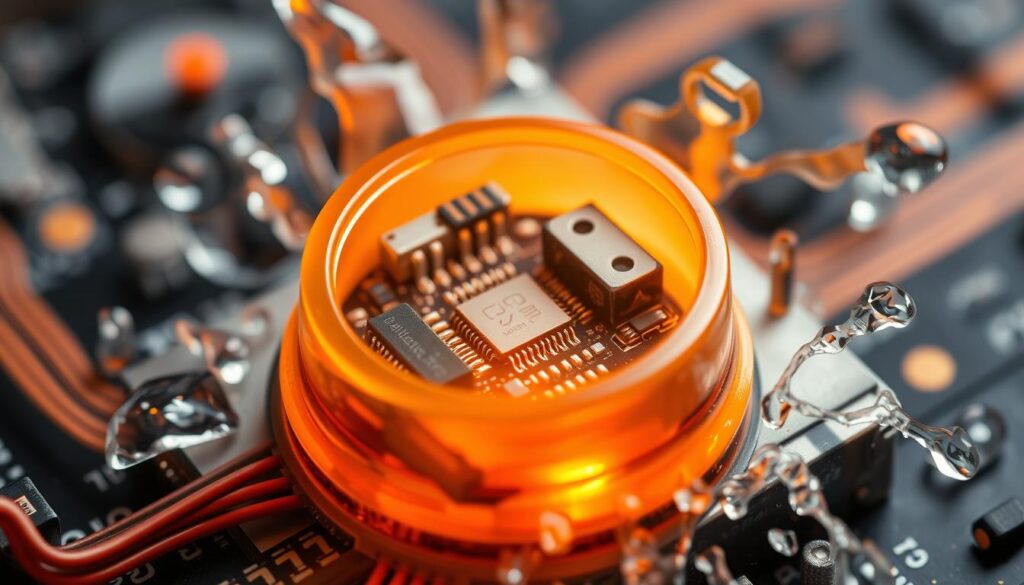
Polyurethane Potting for Vibration and Shock Protection
Polyurethane potting is key for making electronic parts last longer against shakes and bumps. It works as a shock absorber, which is important for many devices and machines.
How Polyurethane Works as a Shock Absorber
This material spreads out energy, which helps stop shock waves in electronic parts. Its flexibility and special properties let it soak up impacts. This is vital for parts that face constant shakes, needing strong potting to last.
Applications in Various Industries
Polyurethane potting is very important in many fields:
- Medical Devices: It keeps sensitive parts in monitoring tools safe from shock, keeping them accurate.
- Automotive Systems: It’s used to protect electronic units in cars from tough conditions and shakes.
- Telecommunications: It helps keep equipment stable when it’s moved a lot, improving its performance.
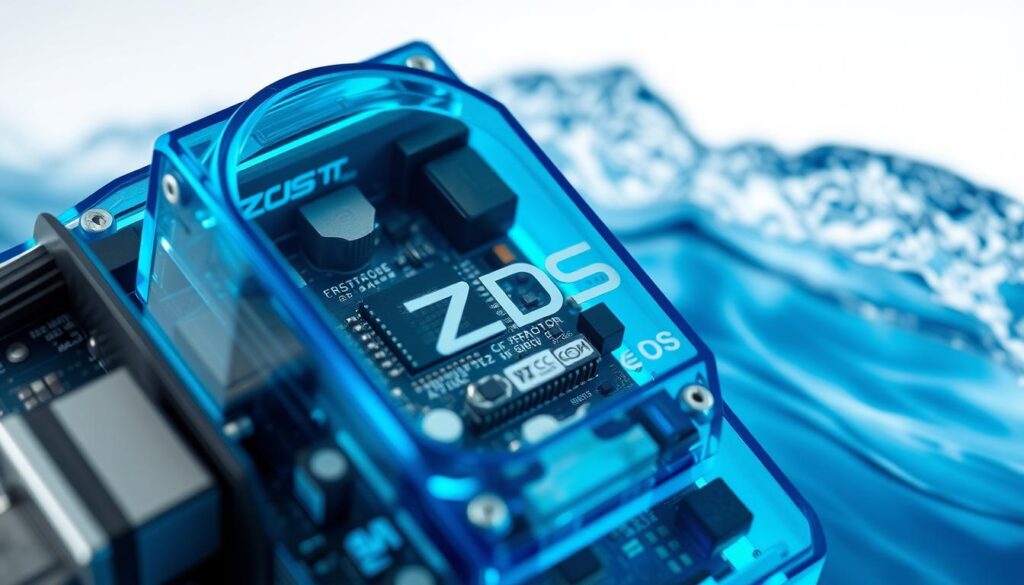
| Industry | Key Benefits of Polyurethane Potting |
|---|---|
| Medical Devices | Protection against vibration, maintaining measurement accuracy |
| Automotive Systems | Durability against harsh driving conditions, extending component life |
| Telecommunications | Stability in performance, lowering failure rates |
Comparison of Potting Compounds
Understanding different potting compounds is key to making good choices. Polyurethane, epoxy, and silicone are common, each with its own strengths. Knowing these helps manufacturers pick the best for their needs.
Polyurethane vs. Other Potting Materials
Each compound has its own good and bad points. Here’s a chart showing how polyurethane stacks up against others.
| Property | Polyurethane | Epoxy | Silicone |
|---|---|---|---|
| Thermal Conductivity | Moderate | High | Low |
| Curing Time | Fast | Moderate | Slow |
| Flexibility | High | Low | Moderate |
| Resistance to Moisture | Good | Excellent | Fair |
| Cost | Moderate | High | Moderate |
Polyurethane is versatile, balancing flexibility and moisture resistance well. The right choice depends on the project’s needs.
Choosing the Right Compound for Your Needs
Choosing the right compound means looking at several things. These include:
- Application Environment: Think about the conditions the compound will face, like heat, moisture, or impact.
- Mechanical and Thermal Requirements: Consider the compound’s thermal conductivity and flexibility.
- Set Time: Decide how fast you need the application to be done.
By considering these, you can make a smart choice for your electronics.
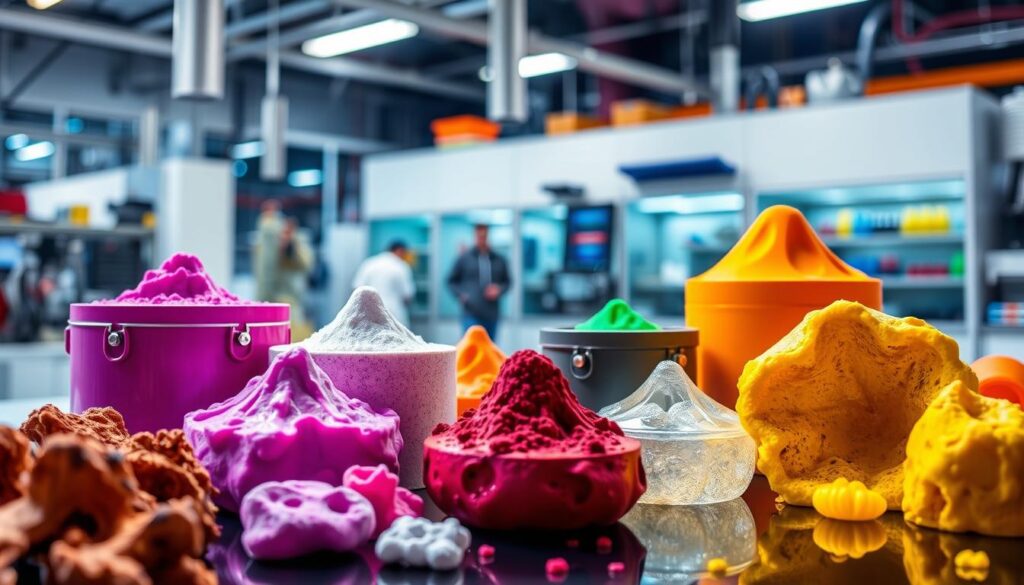
The Process of Polyurethane Encapsulation
Understanding polyurethane encapsulation is key for both makers and DIY fans. It shields electronic parts from harm and boosts their performance. Here’s a step-by-step guide for using an industrial potting solution.
Step-by-Step Guide to Potting
The encapsulation process has several important steps:
- Preparation: Clean and dry the electronic parts well before starting. Make sure the area is dust-free and dry.
- Mixing: Mix the polyurethane components as the maker’s guide says. Right mixing is key for good curing.
- Application: Pour the mixed polyurethane over the parts, covering them fully. Use a brush or spatula to fill tight spots.
- Curing: Let the polyurethane cure as the product guide says. This step is critical for the solution’s protective benefits.
Best Practices for Application
To get the most from polyurethane encapsulation, follow these tips:
- Do a test application to get used to the material.
- Wear safety gear like gloves and goggles to avoid chemical exposure.
- Keep the temperature steady during curing for even results.
- Watch the curing time closely to avoid touching the parts too soon.
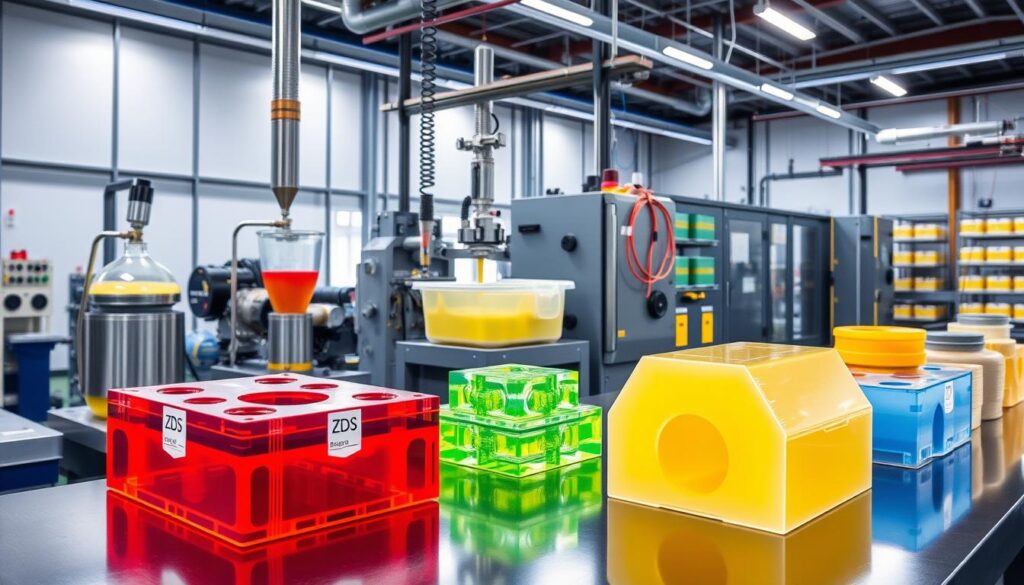
Vibration Resistant Potting Solutions
Ensuring the long life of electronic parts is key. Vibration resistant potting is vital for this. We look at what makes a potting solution great for fighting vibrations.
Identifying Key Features of Vibration Resistance
Good vibration resistant potting has a few important traits:
- High Modulus of Elasticity: A high modulus helps absorb and spread out vibration energy.
- Flexibility: Being flexible means the material can handle stress without breaking.
- Adhesion: Strong adhesion keeps the material stuck to the part, making it more stable.
- Temperature Resistance: It should handle temperature changes well without losing its effectiveness.
Case Studies of Successful Implementations
Many industries have used vibration resistant potting to fix vibration problems. Here are some examples with ZDS™ polyurethane solutions:
- Automotive Electronics: A big car maker had trouble with microcontrollers from vibrations. Using ZDS™ potting cut failures by 80%.
- Aerospace Applications: An aerospace company used ZDS™ potting in their navigation systems. It made the systems more reliable and parts last longer.
- Consumer Electronics: A brand of portable devices used ZDS™ potting. It led to fewer warranty claims for vibration damage.
Protective Coating Technology in Electronics
In the world of electronics, protective coating technology is key. It makes components last longer and work better. Knowing about these coatings helps make electronic devices more reliable.
These coatings team up with polyurethane potting. Together, they protect against damage from the outside world.
Overview of Coating Technologies
There are many types of protective coatings for electronics. Each one has its own job. Here are a few:
- Conformal Coatings: These thin layers keep moisture, dust, and chemicals out.
- Epoxy Coatings: They stick well and protect against moisture and wear.
- Parylene Coatings: Perfect for tricky shapes, they cover everything and handle heat well.
How Coatings Enhance Component Longevity
Using protective coatings with polyurethane potting makes components last longer. This combo does a lot:
- Environmental Protection: Coatings keep parts safe from corrosive stuff that can damage them.
- Mechanical Strength: They make parts stronger against shakes and bumps, helping devices last longer.
- Thermal Management: Coatings help manage heat, keeping sensitive parts safe from damage.
Choosing ZDS™ for Your Potting Solutions
ZDS™ is a top name in polyurethane potting solutions. We offer quality and great service. Our focus on innovation makes us the go-to for reliable potting solutions.
Why ZDS™ is the Industry Leader
ZDS™ is known for our high-quality products. We make sure each potting compound protects against shock and vibration. This helps your components last longer. Here’s why we lead the industry:
- Quality Assurance: We test and check our products carefully.
- Innovative Solutions: We’re always finding new ways to improve.
- Technical Support: Our experts are here to help you at any time.
Customer Testimonials and Success Stories
Our customers love our products, and they tell us so. Their stories show how ZDS™ has made their work better. Here are a few:
“ZDS™ potting solutions have transformed the reliability of our electronic systems, even in tough conditions.” – Reliable Electronics Inc.
“We’ve seen amazing results with ZDS™ products. Their support is top-notch.” – Tech Innovations LLC
| Company | Issue Resolved | Outcomes |
|---|---|---|
| Reliable Electronics Inc. | Poor vibration resistance | Enhanced system reliability |
| Tech Innovations LLC | Material degradation | Longer product life cycle |
Conclusion
Polyurethane potting is key for making electronic parts more reliable and strong. It uses top-notch materials to make devices last longer, even in tough conditions. This ensures they work well for a long time.
At ZDS™, we focus on making potting materials that meet everyone’s needs. We know how important it is to protect devices from damage. Our products are made to give the best protection possible.
We invite you to see how polyurethane potting can help your projects. With our help, your electronics can be more than just functional. They can be reliable and durable, giving you peace of mind.
FAQ
What is polyurethane potting?
Polyurethane potting is a method to protect electronic parts. It uses a strong compound to shield them from harm. This helps devices last longer by keeping them safe from moisture, dust, and other dangers.
How does polyurethane provide vibration and shock protection?
Polyurethane absorbs shocks and vibrations. It helps keep sensitive parts safe during use. Its strong nature makes it perfect for protecting against vibrations in many fields.
What are the advantages of using polyurethane for electronic encapsulation?
Polyurethane potting makes devices more durable and resistant to damage. It also protects against UV light and moisture. This leads to longer-lasting and more reliable electronics.
How does polyurethane compare to other potting compounds?
Polyurethane is more flexible and stable than epoxy and silicone. It also dries faster. These benefits help manufacturers choose the best compound for their needs.
What is the process of polyurethane encapsulation?
The process starts with preparing the parts and mixing the compound. Then, it’s applied carefully for proper drying. Following these steps ensures the components work well and last longer.
In what industries is polyurethane potting commonly used?
Polyurethane is used in many fields. This includes cars, planes, medical devices, and phones. It’s key for keeping parts safe and working well.
How can I identify high-quality vibration-resistant potting solutions?
Look for solutions that are flexible and strong. They should also resist environmental damage. Case studies and performance data can help you make a good choice.
What are the complementary protective coating technologies for electronics?
Technologies like conformal coatings work with polyurethane to protect electronics. They add extra defense against moisture and dust, helping parts last longer.
Why should I choose ZDS™ for my potting solutions?
ZDS™ is a top choice because of our focus on quality and service. Our polyurethane solutions have proven to improve efficiency and reliability in many areas.




